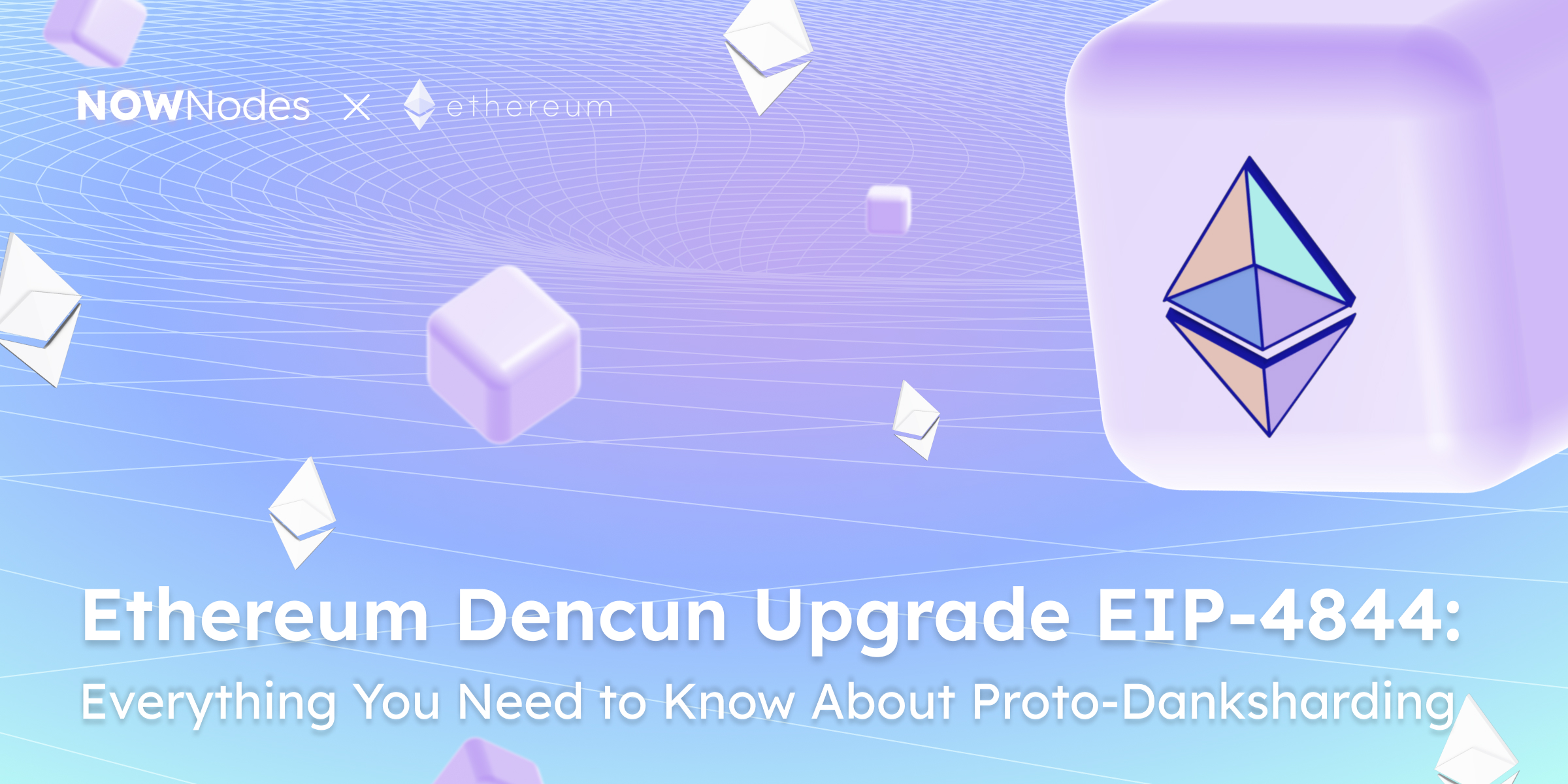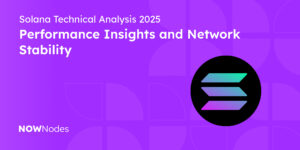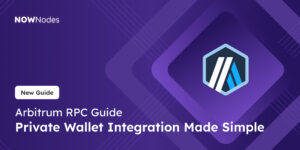Behold the new Ethereum Dencun Upgrade has arrived!
As a community of blockchain enthusiasts, we are always excited about the latest upgrades in Ethereum. One such groundbreaking upgrade is the Ethereum Dencun. In this comprehensive guide, we will delve deep into the intricacies of the Ethereum Dencun Upgrade, explore its features and benefits, and understand the revolutionary concepts of EIP-4844 and Proto-Danksharding. So, let’s embark on this journey to unravel the future of Ethereum.
What is Ethereum Dencun Upgrade?
Before we dive into the details, let’s familiarize ourselves with the basics of Ethereum Dencun Upgrade. So, the Dencun is an upgrade that aims to enhance the scalability and efficiency of the Ethereum network. It introduces innovative solutions to address the challenges faced by the existing Ethereum infrastructure, such as high transaction fees and slow transaction processing speed. It’s not only aimed at making changes to the Ethereum itself but it will also affect all the Layer 2 networks, by offering a brand new way of storing and sharing data.
What does it consist of?
Ethereum Dencun upgrade consists of two major components: Deneb (for the Consensus layer) and Cancun (for the Execution layer). This dream team of updates brings significant changes to Ethereum’s inner infrastructure, by changing the way both beacon nodes and execution nodes operate between each other, sharing and storing data.
- Deneb: Targets the Consensus Layer, aiming to boost network security and validator efficiency.
- Cancun: Focuses on the Execution Layer, introducing enhancements that improve transaction processing and smart contract capabilities.
EIPs included in Dencun Upgrade
So, the Dencun Upgrade involves 9 Ethereum Improvement Proposals (EIPs). Here is the breakdown of all the EIPs included in Deneb and Cancun upgrades that are combined together forming the Dencun:
Deneb EIPs:
- EIP-7044: Simplifies the process of validators exiting and withdrawing the stacker funds. EIP-7044 adds perpetually valid signed voluntary exits allowing simpler staking operation designs.
- EIP-7045: Increases the maximum inclusion slot for attestations following the learned security proof and confirmation rule needs. In simple words, it enhances the period during which an attestation can be included in a consensus Beacon Chain block.
- EIP-7514: Updates the maximum validator growth rate from an exponential to a linear increase by limiting the epoch churn limit. The Beacon chain spec can handle this without issues.
Cancun EIPs:
- EIP-1153: Introduces transient storage opcodes, which manipulate state that behaves identically to storage, except that transient storage is discarded after every transaction. Transient storage is accessible to smart contracts via 2 new opcodes,
TLOADandTSTORE, where “T” stands for “transient:” - EIP-7516: Adds a
BLOBBASEFEE(0x4a) instruction that returns the value of the blob base-fee of the current block it is executing in. It is identical to EIP-3198 (BASEFEEopcode) except that it returns the blob base fee as per EIP-4844. - EIP-5656: Proposes a new EVM instruction called
MCOPYfor efficiently copying memory areas within the EVM. It’s designed to reduce the overhead involved in memory copying operations. - EIP-6780: Changes the functionality of the
SELFDESTRUCTopcode. The new functionality will be only to send all Ether in the account to the target, except that the current behavior is preserved whenSELFDESTRUCTis called in the same transaction a contract was created.
Dencun EIPs:
There are several Ethereum Improvement Proposals that are both changing Consensus and Execution layers together. They are also the most important and game-changing improvements.
- EIP-4844: The most awaited improvement proposal is the EIP 4844. It introduces “shard blob transactions,” which are a new type of transaction designed to handle larger and more complex data structures. This enables Ethereum to support a broader range of applications and use cases by allowing transactions with 128KB ephemeral data blobs to drop after 3 weeks, resulting in no long-term storage usage.
- EIP-4788: Includes the storage of cryptographic accumulators, known as roots, of the blocks in the beacon chain within the EVM. Exposing these roots inside the EVM allows for trust-minimized access to the consensus layer. This functionality supports various use cases that improve trust assumptions of staking pools, restacking constructions, smart contract bridges, MEV mitigations, and more.
Now, as we unveiled and structured all the EIPs included in Dencun Upgrade, let’s dive deeper into the most important and exciting one – EIP-4844.
What is EIP-4844?
EIP-4844 is “one small step for man, one giant leap for mankind” in the context of Ethereum scalability and data sharding. This Ethereum Improvement Proposal greatly closes the day when full data sharding becomes a reality.
EIP-4844 is crucial for Ethereum as it continues to seek scalable solutions to accommodate its growing user base and reduce transaction costs, which are still prohibitively high for many users. Some of the components of EIP-4844 such as Proto-Danksharding allow to significantly decrease the cost of data storage for Ethereum’s layer 2 rollups. This is achieved through the introduction of data “blobs” which enable rollups to post data to Mainnet for a short time. This results in significantly lower transaction fees for users of layer 2 rollups.
Although high gas prices are still a big concern for the Web3 world, there are lots of scaling solutions that can already significantly decrease fees for many Ethereum users. For example, optimistic rollups such as Optimism, Base, and Arbitrum can offer ~3-10x lower fees than Ethereum itself. As well as ZK rollups, such as zkSync, Starknet, Linea, and many others, which have better data compression and can stay away from including signatures, have fees ~50-100+ times lower than the base layer.
However, even these reduced fees are too costly for many users. The ideal answer to this issue has always been data sharding, which would provide approximately 16 MB per block of exclusive data space that rollups could use. However, many improvements must be made until full data sharding is achieved.
To deal with these issues EIP-4844 proposes a temporary solution by introducing a transaction format intended for sharding, without actually sharding transaction data. Instead, the data from this transaction format is just a piece of the beacon chain and is completely downloaded by all consensus nodes. Moreover, this data can be deleted after only a fairly short delay. Unlike full data sharding, this EIP sets a cap on the volume of such transactions per block, aiming for around 0.375 MB and capping at approximately 0.75 MB.
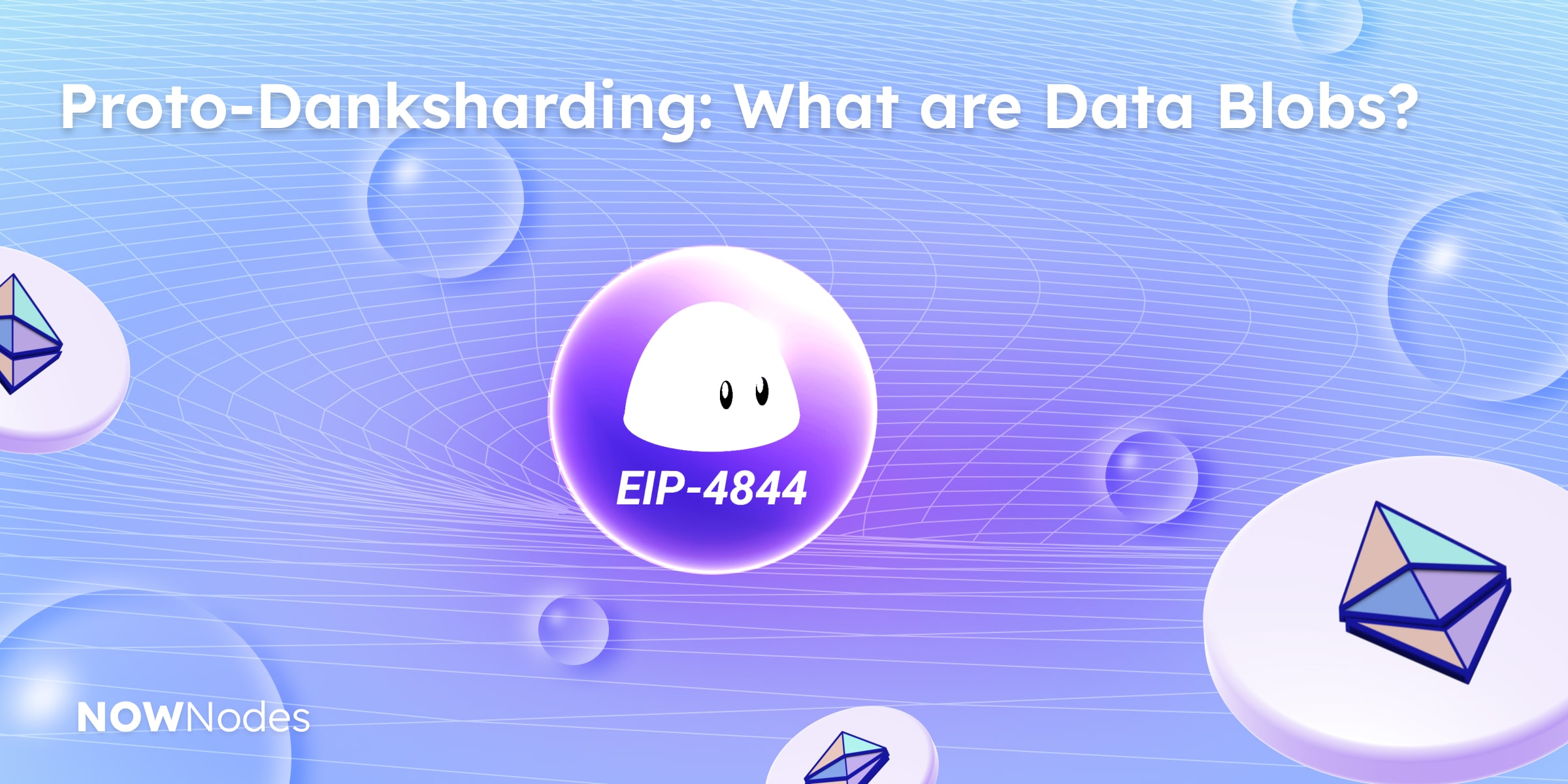
Proto-Danksharding: What are Data Blobs?
As it is said, the core feature of the EIP-4844 is the Proto-Danksharding which is the introduction of data “blobs“. This exciting improvement enables rollups to post data to Mainnet for a short period. This results in significantly lower transaction fees for users of layer 2 rollups.
So, what are exactly data blobs? Data blobs, as introduced in Ethereum’s EIP-4844, are essentially large chunks of data that can be attached to transactions. These blobs are designed to enhance Ethereum’s scalability by allowing more data to be included in each block without significantly increasing transaction costs.
Blobs are data packets in which full information about the L2 transaction block is written. In this case, the blob is stored outside the execution layer, i.e. the EVM has no direct access to the data in the blob. Developers use the concept of a sidecar to describe the concept because a blob is “attached” to a block like a sidecar to a motorcycle. The data within these blobs is not required to be retained by consensus nodes, although a form of cryptographic proof of their previous existence remains.
Previously, rollups used calldata to write transaction bundle data. Although calldata stored smaller data volumes and was cheaper, this information was about to stay on nodes practically forever, leading to data accumulation and increased node requirements. Since the EIP-4844 came to the network, rollups don’t have any choice but to use data blobs because sharded data will be much cheaper.
Blobs are meant to be transient and unlike the calldata only available for a limited period of time (about 18 days) after which the data within is no longer retrievable by consensus clients. However, a cryptographic “fingerprint” of the blob, known as a KZG commitment, remains on the mainnet. KZG commitments ensure that despite the short-lived nature of blob data, its integrity can still be verified, which is crucial for maintaining trust in the network’s operations.
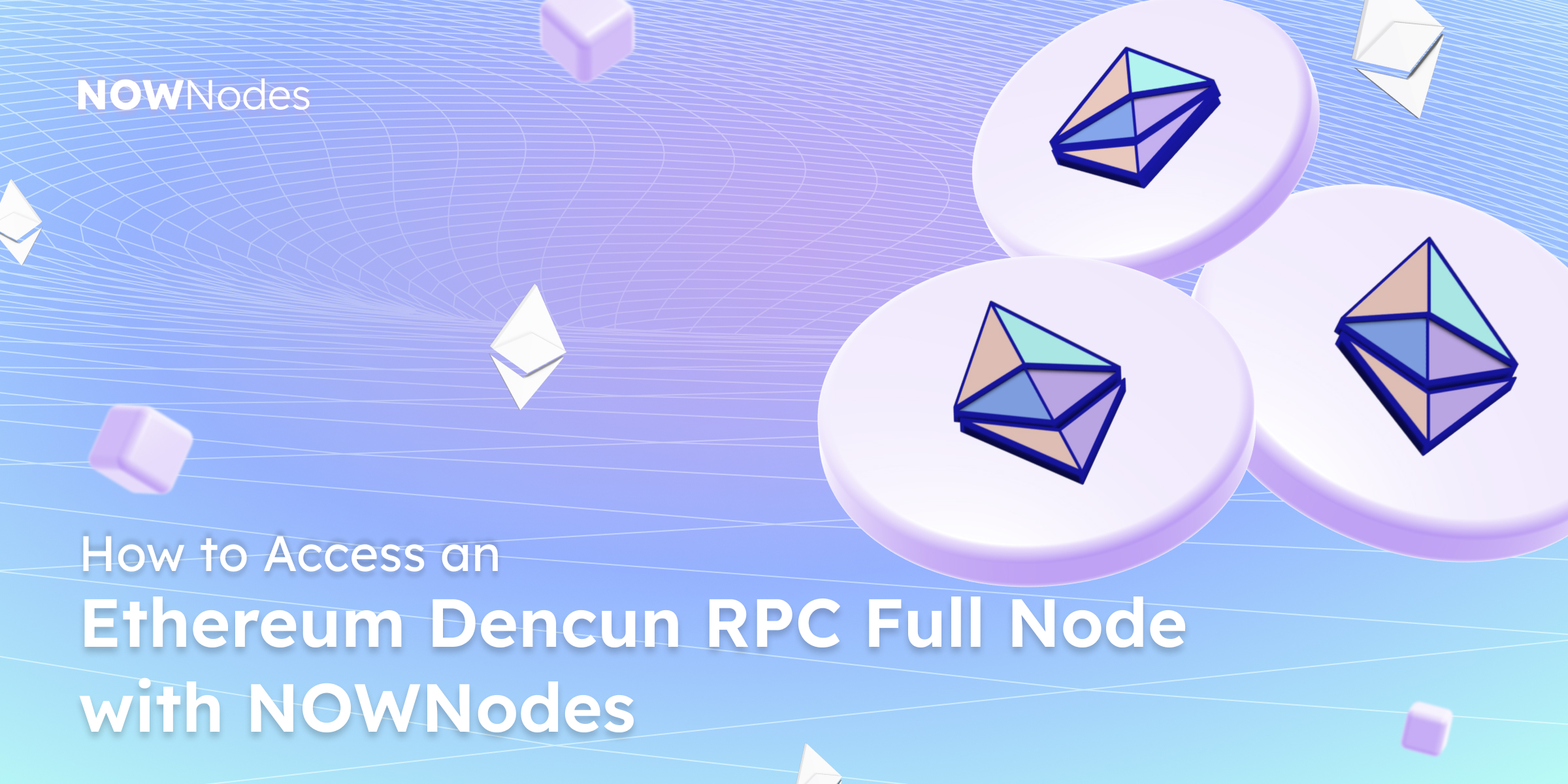
How to Access an Ethereum Dencun RPC Full Node with NOWNodes
Here at NOWNodes, all our Ethereum nodes as well as Layer 2 network nodes have already been updated to Dencun, and are working smoothly. By choosing NOWNodes for your Ethereum or L2 development process you don’t have to care about setting up a node for this update. All you need to connect to the Ethereum or Layer 2 networks is to follow these simple steps:
- Visit the NOWNodes website (https://nownodes.io/) and sign up for an account, using only your email address. No KYC is required.
- The next step is to choose a tariff plan. There are different plans that fit any Web3 needs, including a STARTFREE plan.
- If you’re willing to start with a free plan, make sure to add Ethereum and the L2 networks that you wish to work with, to the list of 5 blockchain networks available on this tariff.
- If you are ready to go on with the PRO plan or higher, you can access any node out of 100 nodes that NOWNodes has to offer, including some additional features such as WSS, Tendermint, and Webhooks.
- Then you need to create an API key in your “DASHBOARD”. Just push the button “ADD NEW KEY” and get your API key.
- Finally, when the registration process is over, you’re ready to make some requests to the Ethereum network and start building.
- Explore the methods on the NOWNodes “DOCS” page and use them to interact with the node.
Choosing NOWNodes as your reliable node provider you can be assured that our nodes are under 24/7 surveillance – their availability and relevance are constantly being monitored. That is crucial for developers who are interested in launching a project that runs on top of the Ethereum blockchain or any L2 network.
Conclusion
In conclusion, the Ethereum Dencun Upgrade is a game-changer for the Ethereum network. With the integration of EIP-4844 and Proto-Danksharding, Ethereum gains scalability, efficiency, and improved user experience. The usage of data blobs optimizes storage and retrieval, providing developers with new possibilities for building decentralized applications, and Layer 2 solutions with new opportunities to reach the next operational level.
As we move forward into the future, it is crucial to embrace the Ethereum Dencun Upgrade and be part of the transformative journey towards a decentralized and scalable blockchain ecosystem, embracing full data sharding.
Make sure to join our Telegram Builders Community and X/Twitter to be informed first about the latest exciting updates of blockchain networks. Moreover, if you have some questions about our service you can address them there, and our team would be glad to answer any time a day.
Become a part of Ethereum’s History by connecting to ETH Dencun Mainnet #NOW
